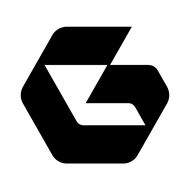In the endlessly evolving landscape of web technologies, the task of gathering information from websites has become both vital and complex. Whether you are a data analyst, a marketer, or simply a curious individual, the ability to efficiently extract web data can open up a universe of possibilities. This brings me to share my recent venture into web scraping, particularly focused on scraping data from Facebook pages using the Portia web scraper. Portia, an open-source tool that stands on the shoulders of the robust Scrapy framework, provides a visually intuitive approach to web scraping, which I found to be both fascinating and practical.
Diving into Portia
Getting started with Portia involves setting up your environment, which can initially seem daunting due to its dependencies on numerous external libraries. Fear not; the process, although involved, is thoroughly documented and mainly consists of setting up a virtual environment in Python, a step that shields your primary system from any potential conflicts or issues.
Setting Up the Environment
My journey began with the installation of virtualenv, a tool that creates isolated Python environments. This step is crucial for maintaining project-specific dependencies without affecting global configurations. Here's a quick rundown of the commands:
$ pip install virtualenv
$ virtualenv portia_example --no-site-packages
$ source portia_example/bin/activate
(portia_example)$ cd portia_example
The series of commands above not only installs virtualenv but also creates and activates a new virtual environment named portia_example. You can, of course, replace "portia_example" with any name that suits your project.
Why Embrace virtualenv?
You might wonder why the hassle with virtualenv. The simple answer lies in its ability to create a clean, contained workspace specifically for your project. Think of it as assigning a dedicated room in your house for a specific task; it helps avoid clutter and ensures everything you need is right where you expect it to be, without interfering with the rest of the house.
The Power of Visual Scraping
Portia shines in its approach to web scraping. Unlike traditional methods that require writing CSS selectors by hand, Portia allows users to simply click on elements of a webpage they wish to scrape. This visual approach not only simplifies the process but also makes it accessible to those who might not have extensive coding experience.
The beauty of visual scraping lies in its immediacy and intuitiveness. You see, interact, and select the data you need directly from the web interface, which Portia then uses to generate the scraping logic. It’s a hands-on way to teach the software exactly what you are looking for, making the entire process feel more personalized and less abstract.
Conclusion
My exploration into scraping Facebook pages using Portia has been an eye-opening experience. The tool's reliance on visual cues, combined with the power of Scrapy, makes web scraping a less daunting task than it typically appears. While the initial setup may require some patience, the payoff in terms of ease of use and efficiency is well worth it.
For anyone looking to enter the web scraping domain, or for seasoned developers looking for a more intuitive approach, Portia offers a compelling solution. It breaks down the barriers of technical complexity, making web scraping an accessible, virtually limitless resource for data collection. Whether you're gathering market insights, consumer feedback, or any other form of web data, Portia equips you with the means to do so in a user-friendly and efficient manner. It's a testament to the power of visual tools in the modern developers' toolkit, ensuring that the wealth of information available online is only a few clicks away.





Top comments (0)